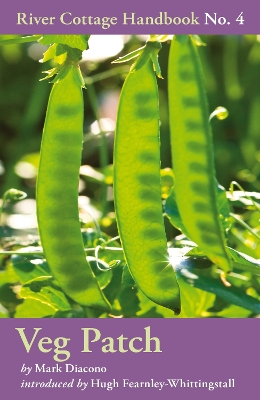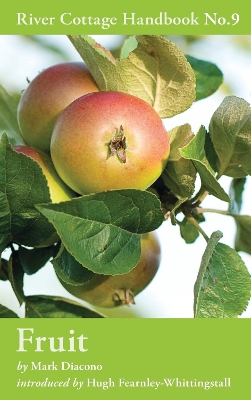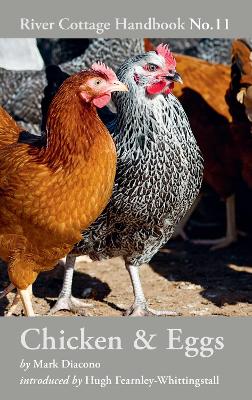River Cottage Handbook
1 primary work • 3 total works
Book 4
Drawing directly from his experience as an acclaimed climate-change gardener, and of setting up a kitchen garden from scratch for River Cottage, Mark explains the practical aspects of organic growing, introduces us to a whole world of vegetables we may not have previously considered, and does away with alienating gardening jargon once and for all. Mark begins with a catalogue of vegetables that will grow in this country, explaining for each their benefits, what varieties to go for, dos and don'ts, and popular culinary uses. He then invites us to create a wish list of foods, and shows us his own list from his early gardening days. Next, he explains how to turn this wish list into a coherent kitchen garden plan appropriate for our space, whether it be a patch of acidic soil, a roof-top garden or an allotment, whether we put on our wellies in every free moment or are 'time-poor' gardeners. Then he puts all the theory into practice, showing us how to look after nutrients in the soil, how to resist pests and diseases, and how to make our garden sustainable and organic.
In clear, concise sections we learn about seed trays, supporting plants with climbing structures, mulching, composting, companion planting, irrigation and promoting pollination, and there are additional tables showing sowing and harvesting times, plant sizes, and alternative varieties of plants for different sites. About thirty recipes and a directory of useful addresses finish the book, and the handbook is complemented by bright colour photography throughout. Practical and inspiring, with a textured hard cover and an introduction by Hugh Fearnley-Whittingstall, Veg Patch is destined to join Handbooks No. 1, 2 and 3 as an indispensible household reference.
In clear, concise sections we learn about seed trays, supporting plants with climbing structures, mulching, composting, companion planting, irrigation and promoting pollination, and there are additional tables showing sowing and harvesting times, plant sizes, and alternative varieties of plants for different sites. About thirty recipes and a directory of useful addresses finish the book, and the handbook is complemented by bright colour photography throughout. Practical and inspiring, with a textured hard cover and an introduction by Hugh Fearnley-Whittingstall, Veg Patch is destined to join Handbooks No. 1, 2 and 3 as an indispensible household reference.
Growing fruit at home is a delicious and altogether more enjoyable alternative to buying it in the shops. Mark Diacono offers a practical and accessible guide to making the most of your garden and what it has to offer.
The first part of the book is an A-Z of the different varieties of fruit, with old favourites like apples, cherries, plum, blackcurrants, white currants, redcurrants, strawberries, blueberries, gooseberries, raspberries and rhubarb as well as more exotic species like figs, grapes, cranberries, Japanese wine berries and apricots. Each is accompanied by a photograph, with detailed advice on when and how to grow and harvest.
In the second part of the book, Mark gives straightforward guidelines on techniques like pruning and training, as well as how to deal with problems or pests. There is a section dedicated to growing under covers and in containers.
Introduced by Hugh Fearnley-Whittingstall and with 30 delicious recipes, beautiful, full-colour photographs and a directory of useful addresses, this is the ideal reference for any aspiring fruit grower.
The first part of the book is an A-Z of the different varieties of fruit, with old favourites like apples, cherries, plum, blackcurrants, white currants, redcurrants, strawberries, blueberries, gooseberries, raspberries and rhubarb as well as more exotic species like figs, grapes, cranberries, Japanese wine berries and apricots. Each is accompanied by a photograph, with detailed advice on when and how to grow and harvest.
In the second part of the book, Mark gives straightforward guidelines on techniques like pruning and training, as well as how to deal with problems or pests. There is a section dedicated to growing under covers and in containers.
Introduced by Hugh Fearnley-Whittingstall and with 30 delicious recipes, beautiful, full-colour photographs and a directory of useful addresses, this is the ideal reference for any aspiring fruit grower.
Chickens are a fantastic addition to a garden or outdoors space - you don't have to live in the back of beyond to have a few clucking around and giving you fresh eggs. They come in all shapes and sizes: some are layers, some are just born to strut. Mark Diacono begins at the basics, showing how you can raise chickens from eggs, and look after them once they start laying their own.
The first part of Chicken & Eggs explains how to think ahead about what kind of chickens you want and how many to get, whether you are going for a breed that lays eggs regularly, or that you might eventually use for eating, or that simply looks decorative. You can choose from Orpingtons, Derbyshire redcaps, Muffed Old English Game, Leghorns and many more.
Mark then goes on to show how you can breed chickens, encourage them to lay, work out what kind of eggs you have (are they destined for the eggcup, or will they hatch into baby chicks?), and take care of them day to day, as well as how you can go about getting the birds on the table. The final part of the book is a recipe section that goes far beyond the roast, with lots of delicious ideas for fresh eggs or home-reared chicken.
With an introduction by Hugh Fearnley-Whittingstall, this is an essential guide for anyone who can't stop thinking about chicks.
The first part of Chicken & Eggs explains how to think ahead about what kind of chickens you want and how many to get, whether you are going for a breed that lays eggs regularly, or that you might eventually use for eating, or that simply looks decorative. You can choose from Orpingtons, Derbyshire redcaps, Muffed Old English Game, Leghorns and many more.
Mark then goes on to show how you can breed chickens, encourage them to lay, work out what kind of eggs you have (are they destined for the eggcup, or will they hatch into baby chicks?), and take care of them day to day, as well as how you can go about getting the birds on the table. The final part of the book is a recipe section that goes far beyond the roast, with lots of delicious ideas for fresh eggs or home-reared chicken.
With an introduction by Hugh Fearnley-Whittingstall, this is an essential guide for anyone who can't stop thinking about chicks.


